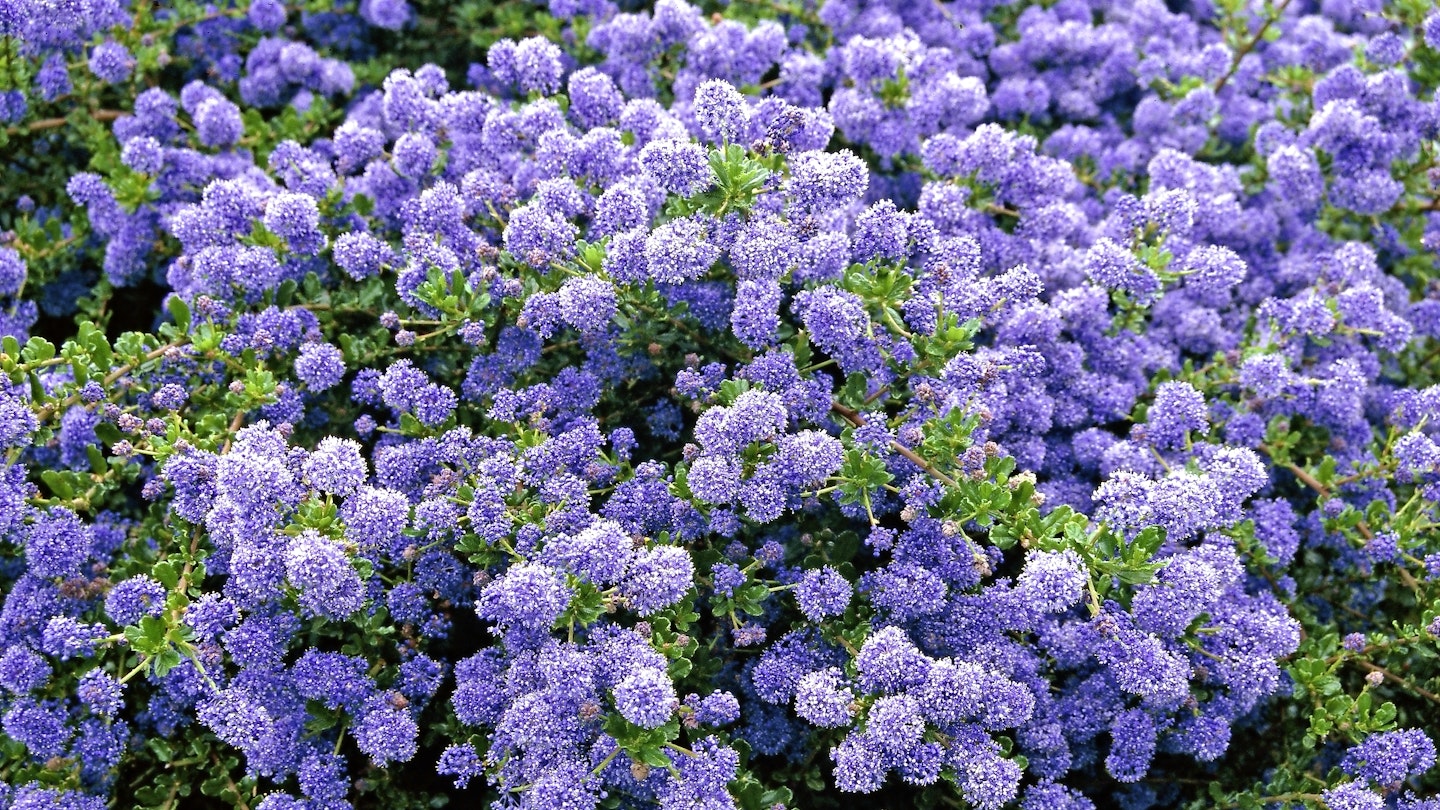If you see swathes of blue in gardens in spring time it’s likely to be a ceanothus, commonly known as the Californian lilac.
Unrelated to the traditional lilac or syringa, the value of ceanothus is becoming more widely appreciated. At this time of year no other shrub offers such a rich and exotic splash of colour, contrasting powerfully with the razzle-dazzle of late tulips and early perennials.
As the name suggests, these evergreen, semi-evergreen and deciduous plants come from the dry, sunny hills, coastal ranges and forest clearings of California, but also into the Rocky Mountains, Oregon and British Columbia.
Of the 50-plus species around 10 are grown in gardens which, along with various hybrids, between them has spawned 50 or so varieties.
The larger number of evergreen and semi-evergreen forms with glossy, dark green foliage blossom in spring and early summer, with the handful of paler, green-leaved, deciduous species in summer. Although predominantly in shades of blue, a few varieties produce white or even pink blooms.
While individual flowers are tiny, they’re massed into dense bobble-headed clusters or more open sprays and are attractive to bees and other pollinators. Variegated forms have also arisen with creamy yellow variegation.
Plants vary in height and habit, the largest achieving between 3m (10ft) or more high and wide, while some are smaller and others spreading, making them useful for cascading over larger retaining walls. Plants will maintain a tighter growth habit if regularly clipped after flowering. Plants cut back hard should recover and produce new shoots, with deciduous and younger, evergreen varieties, rather than older ones, proving more amenable.
Ceanothus prefer well-drained soil and are useful for chalky types and need full sun. They make good wall shrubs, especially for a south-facing position, where the evergreen species flowering now will be more protected from cold, winter winds.
The deciduous species are generally hardier.
Our pick of the best ceanothus
Blue Mound
Spreading small-leaved evergreen. Small bobble-headed, bright blue blossom in April and May. H: 1.5m (5ft) S: 2.5m (8ft). From: www.3fatpigs.co.uk
Blue Sapphire
Dark purple-green evergreen leaves on arching stems. Dark sapphire-blue blossom in April and May. H: 1.5m (5ft) S: 1.8m (6ft). From: www.kelways.co.uk
Concha
Larger grower clothed in small evergreen leaves. Massed heads of rich blue flowers in May and June. H/S: 3m (10ft). From: www.crocus.co.uk
Cool Blue
New variegated dwarf form. Light blue flowers from May. Ideal for pots or hanging baskets. H/S: 60cm (2ft). From: www.directplants.co.uk
Dark Star
Deep purple-blue honey-scented flowers on arching stems. Small, neat evergreen leaves. H: 1.8m (6ft) S: 3m (10ft) From: www.burncoose.co.uk
C. thyrsiflorus Skylark
Clusters of deep blue flowers from spring to summer. Bushy habit. Neat foliage. H: 1.5m (5ft) S: 1.8m (6ft). From: www.burncoose.co.ukwww.burncoose.co.uk
